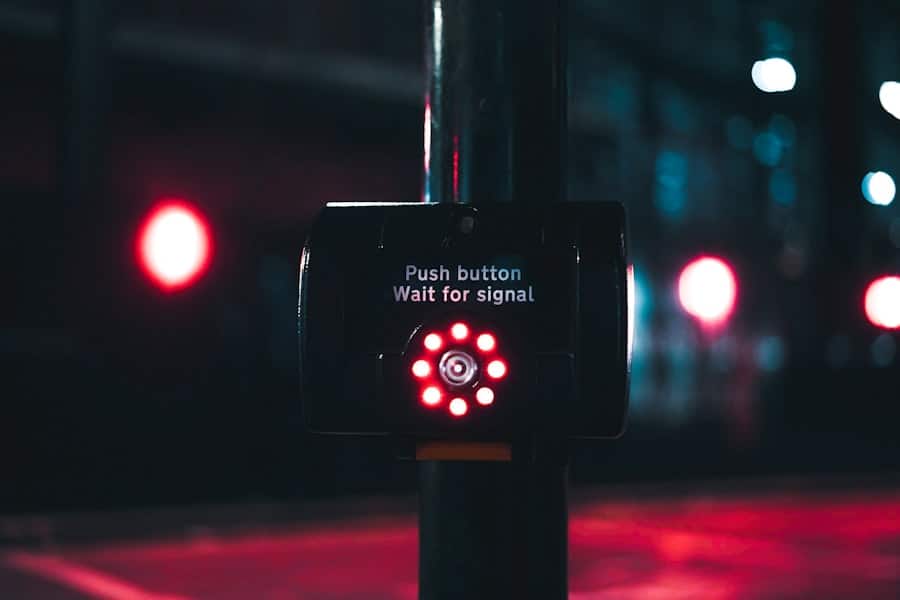The advent of artificial intelligence (AI) has revolutionized numerous sectors, and one of the most transformative applications is in voice interaction technology. AI-powered voice interaction refers to the ability of machines to understand, process, and respond to human speech in a natural and intuitive manner. This technology leverages natural language processing (NLP), machine learning, and deep learning algorithms to facilitate seamless communication between humans and machines.
The rise of smart assistants like Amazon’s Alexa, Apple’s Siri, and Google Assistant exemplifies how voice interaction has become an integral part of daily life, enabling users to perform tasks hands-free and access information with mere vocal commands. As voice interaction technology continues to evolve, its implications extend far beyond simple task execution. The integration of AI into voice systems allows for a more personalized experience, where the system learns from user interactions and adapts accordingly.
This capability not only enhances user engagement but also fosters a deeper connection between humans and technology. The potential applications are vast, ranging from customer service automation to interactive gaming experiences, making AI-powered voice interaction a pivotal component in the development of immersive environments.
Key Takeaways
- AI-powered voice interaction is revolutionizing the way we interact with technology, allowing for more natural and intuitive communication.
- AI-powered voice interaction plays a crucial role in creating immersive experiences by providing a more seamless and interactive interface for users.
- The advantages of AI-powered voice interaction in immersion include increased accessibility, convenience, and personalization for users.
- Challenges and limitations of AI-powered voice interaction include accuracy issues, privacy concerns, and potential biases in the technology.
- Implementing AI-powered voice interaction in various industries, such as healthcare, retail, and entertainment, can enhance user experiences and streamline processes.
The Role of AI-Powered Voice Interaction in Immersive Experiences
AI-powered voice interaction plays a crucial role in creating immersive experiences across various platforms, including virtual reality (VR), augmented reality (AR), and mixed reality (MR). In these environments, traditional input methods such as keyboards and controllers can be cumbersome and detract from the sense of presence that users seek. By incorporating voice interaction, developers can create more natural and intuitive interfaces that allow users to engage with digital content in a way that feels organic.
For instance, in a VR game, players can issue commands or interact with characters using their voice, enhancing the realism of the experience. Moreover, voice interaction can facilitate storytelling in immersive environments. In narrative-driven games or experiences, characters can respond dynamically to user input, creating a more engaging and interactive storyline.
This level of interactivity not only captivates users but also encourages them to explore different narrative paths based on their vocal choices. The ability to converse with virtual characters or manipulate the environment through speech adds layers of depth to the experience, making it more memorable and impactful.
Advantages of AI-Powered Voice Interaction in Immersion

One of the primary advantages of AI-powered voice interaction is its ability to enhance user engagement through natural communication. Unlike traditional interfaces that require users to learn specific commands or navigate complex menus, voice interaction allows for a more fluid exchange. Users can express themselves in their own words, making the interaction feel more personal and less mechanical.
This natural form of communication can lead to increased satisfaction and a stronger emotional connection to the experience. Additionally, AI-powered voice interaction can significantly improve accessibility for individuals with disabilities. For those who may have difficulty using standard input devices due to physical limitations, voice commands provide an alternative means of interacting with technology.
This inclusivity not only broadens the user base but also ensures that immersive experiences are available to a wider audience. By removing barriers to entry, developers can create environments that are truly immersive for everyone, regardless of their physical capabilities.
Challenges and Limitations of AI-Powered Voice Interaction
Despite its many advantages, AI-powered voice interaction is not without its challenges and limitations. One significant hurdle is the accuracy of speech recognition technology. While advancements have been made in understanding various accents and dialects, there are still instances where the system may misinterpret commands or fail to recognize speech altogether.
This can lead to frustration for users who expect a seamless experience. Furthermore, background noise can significantly impact the effectiveness of voice recognition systems, particularly in crowded or dynamic environments. Another challenge lies in the contextual understanding of language.
Human communication is often nuanced, relying on tone, inflection, and context to convey meaning. AI systems may struggle with these subtleties, leading to misunderstandings or inappropriate responses. For example, sarcasm or idiomatic expressions can be particularly difficult for AI to interpret correctly.
As a result, developers must continually refine their algorithms and training data to improve contextual comprehension and ensure that interactions feel authentic.
Implementing AI-Powered Voice Interaction in Various Industries
The implementation of AI-powered voice interaction spans numerous industries, each leveraging the technology in unique ways to enhance user experiences. In healthcare, for instance, voice-activated systems can assist medical professionals by allowing them to access patient records or input data hands-free while attending to patients. This not only streamlines workflows but also minimizes distractions during critical moments.
In the retail sector, companies are utilizing AI-powered voice interaction to create personalized shopping experiences. Virtual shopping assistants can guide customers through product selections based on vocal inquiries, recommend items based on previous purchases, and even assist with checkout processes—all through conversational interfaces.
This level of personalization not only enhances customer satisfaction but also drives sales by creating a more engaging shopping environment.
Future Developments and Innovations in AI-Powered Voice Interaction

As technology continues to advance at a rapid pace, the future of AI-powered voice interaction holds exciting possibilities. One area poised for growth is the integration of emotional intelligence into voice systems. By equipping AI with the ability to recognize and respond to human emotions through vocal tone and speech patterns, developers can create more empathetic interactions.
This could lead to applications in mental health support or customer service scenarios where understanding emotional context is crucial. Furthermore, advancements in multilingual capabilities are likely to enhance global accessibility. As businesses expand their reach across borders, the demand for voice interaction systems that can seamlessly switch between languages will grow.
Such innovations would not only break down language barriers but also foster greater inclusivity in global interactions.
Ethical Considerations and Privacy Concerns
The rise of AI-powered voice interaction brings with it a host of ethical considerations and privacy concerns that must be addressed as technology evolves. One major issue is data privacy; voice interactions often require the collection and processing of personal data to function effectively. Users may be unaware of how their data is being used or stored, leading to potential breaches of privacy.
Companies must prioritize transparency regarding data handling practices and implement robust security measures to protect user information. Additionally, there are concerns about bias in AI algorithms that power voice recognition systems. If training data is not diverse enough, it may lead to skewed results that favor certain demographics over others.
This could result in marginalized groups facing challenges when interacting with voice systems, further perpetuating inequalities in technology access. Developers must actively work towards creating inclusive datasets and continuously evaluate their systems for bias to ensure fair treatment for all users.
The Impact of AI-Powered Voice Interaction on Immersive Experiences
AI-powered voice interaction is reshaping how we engage with technology across various domains, particularly in creating immersive experiences that captivate users’ attention and foster deeper connections. By enabling natural communication and enhancing accessibility, this technology has the potential to transform industries ranging from healthcare to retail. However, as we embrace these advancements, it is essential to remain vigilant about the ethical implications and challenges that accompany them.
The future promises even greater innovations in AI-powered voice interaction, paving the way for more empathetic systems that understand human emotions and facilitate seamless multilingual communication. As we navigate this evolving landscape, prioritizing user privacy and addressing biases will be crucial in ensuring that these technologies serve everyone equitably. Ultimately, the impact of AI-powered voice interaction on immersive experiences will continue to grow as we explore new frontiers in human-computer interaction.
In the realm of digital experiences, AI-powered voice interaction is revolutionizing how users engage with technology, offering a more immersive and intuitive interface. This transformation is closely related to the broader field of user experience (UX) design, where selecting the right tools can significantly impact the effectiveness of digital solutions. For those interested in exploring the best software options to enhance UX, the article “Best Software for UX” provides valuable insights into the tools that can complement AI-driven voice interactions, ensuring a seamless and engaging user experience.
FAQs
What is AI-powered voice interaction?
AI-powered voice interaction refers to the use of artificial intelligence to enable devices to understand and respond to human voice commands. This technology allows users to interact with devices using natural language, making the interaction more intuitive and seamless.
How does AI-powered voice interaction enhance immersion?
AI-powered voice interaction enhances immersion by creating a more natural and intuitive way for users to interact with technology. By using voice commands, users can engage with devices in a hands-free manner, allowing them to stay fully immersed in their activities without the need to interrupt their flow to use traditional input methods.
What are some examples of AI-powered voice interaction enhancing immersion?
Some examples of AI-powered voice interaction enhancing immersion include using voice commands to control smart home devices, interacting with virtual assistants like Siri or Alexa, and using voice search to find information on the internet. These applications allow users to seamlessly integrate technology into their daily lives without disrupting their activities.
What are the benefits of AI-powered voice interaction for users?
The benefits of AI-powered voice interaction for users include increased convenience, improved accessibility for individuals with disabilities, and a more natural and intuitive way to interact with technology. Voice interaction also allows users to multitask more effectively and can enhance the overall user experience.
What are the potential drawbacks of AI-powered voice interaction?
Potential drawbacks of AI-powered voice interaction include privacy concerns related to always-on listening devices, limitations in understanding complex or nuanced commands, and the potential for misinterpretation of voice commands. Additionally, some users may feel uncomfortable speaking commands aloud in public or shared spaces.

